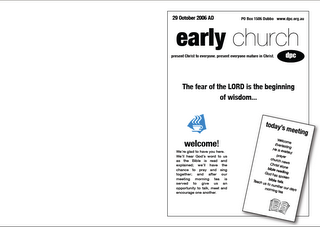Nathan Campbell recently attended a marketing seminar with the guy responsible for marketing Virgin Blue. Should you "brand" your church? And what's a "brand" anyway? In fact, maybe you're branded already? Check out his report:
Brands that sizzleBranding is a new marketing buzzword. It’s a concept that’s moved from the cattle stock yards to the biggest players on the stock market. Developing an established brand identity is the holy grail of marketing. Once a product has a recognisable brand it essentially sells itself, but a brand can lose its lustre so you have to work hard to maintain your brand. But what is a brand? How do you create brand recognition - how do you make your brand stand out from the pack?
What is a brand?A brand is not your logo. Your logo is only a small part of your image. Nobody buys a logo. People want the product behind the logo. Your brand is the emotional response people have to the presentation of your product. It’s the first thing that pops into someone’s head when confronted with your logo. In the 1980’s Nike’s brand was cool, desirable and a sign of prosperity – now, just 20 years on the Nike swoosh represents sweatshop exploitation, American imperialism and all that is bad about globalisation. Nike has lost its branding. Different audiences have different understandings of the brand. Your brand is not the label you use to describe yourself – it’s the label others use to describe you. Marketing your brand is the way to equalise those perceptions.
Brand RecognitionBrand recognition develops over time, and through the clear, repeated communication of the key elements of your brand/product to customers. Brand recognition won’t happen overnight, but it will happen. An effective slogan will catch in people’s minds (like the shampoo slogan I just quoted). Coca Cola’s theory on marketing their brand is that a potential customer needs to come into contact with their brand 8 times for every sale. The theory is that subconsciously if you register the coke brand 8 times in the one day you’ll need a coke. There are much cheaper ways of developing that brand identity.
Marketing Principles“There’s only one rule in advertising – but nobody knows what it is” – Sean Cummins, Cummins&Partners
“I know half my advertising works, only I don’t know which half” – some company executive quoted by Sean Cummins
Advertising and marketing are imprecise sciences but there are general principles you can employ to make sure your brand is as effective as possible.
1. Find your point of difference. In a world where there are thousands of options that all look the same you need to find the thing that defines your product and separates you from the rest of the pack. Selling the same product as the people next door in the same way isn’t going to bring more people through your doors.
2. Say one thing really well. Once you’ve found your focus – stick to it. Trying to communicate multiple messages at once means you’ve got too many balls flying in the air. Communicate one message that you want everyone to understand about your brand. If you try to send out too many messages the ball (your message) becomes too hard for your target to catch.
3. Do something different – because we live in a culture dominated by advertising anyone with a brain can churn out an ad – look for a different way to communicate your message. Do something quirky, eye catching. Don’t be bogged down in generic marketing talk. Avoid clichés like the plague. Don’t rely on icons to sell your product. The market is now looking for experiences rather than Kodak moments. Sell the experience of your product rather than the product itself.
4. Stay consistent. A brand is consistent. Consistency builds trust. Consistency demands action.
5. If you’re trying to figure out who your target audience is ask yourself “what sort of car is my product” – car companies spend millions of dollars on demographic research and know who to target their messages to. Look at the approach they take in their marketing and take those principles to your approach.






















